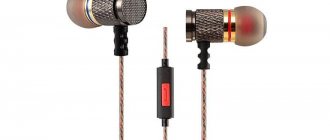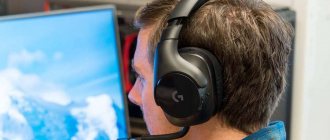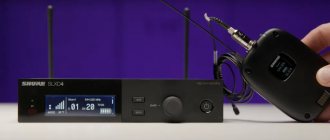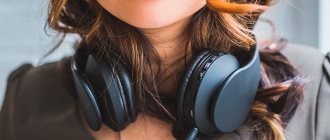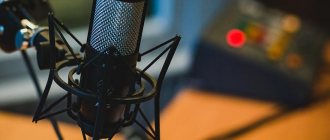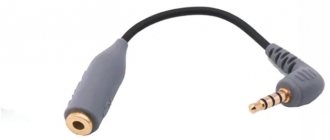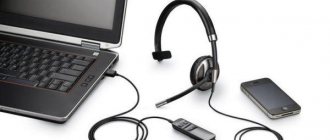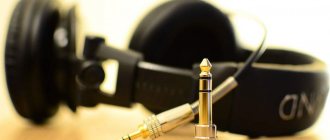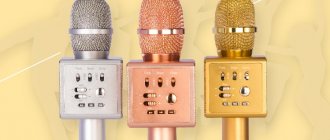I have ambivalent feelings about USB microphones: I previously worked as a radio sound engineer. And I thought that these devices were quite suitable, relatively speaking, for the “smallest”, that is, beginners. But for something mature and serious, you need sound cards, and for the best models, amplifiers, and that’s all.
Of course, in all stories there are exceptions. If you buy a microphone that needs a sound card for a couple of thousand rubles, you shouldn’t expect miracles. But among USB microphones there are worthy examples.
I received the AKG Lyra for review. What kind of microphone will it become: a tool for the little ones or something serious?
Design and equipment
Like any other microphone kit, the AKG Lyra is also minimalist. Here you will find the microphone itself, screwed to the stand, a USB Type-C to USB-A cable and a 1/2 to 3/8 coupling for fixing the microphone on third-party stands.
The microphone looks very interesting. Its design refers us to the legendary AKG, produced by the company for many decades. For example, for AKG C214, C314 or C414. However, this design seems a little rough to me. It’s as if a graphic designer made a plastic blank to imitate a retro microphone from the 1950s–1960s. And it’s not very clear what it is: a microphone or some kind of large electric razor.
The similarity with the latter is given by a small grill, which is a good replacement for a pop filter: I blew into the microphone, and nothing else got into it except sound!
The weight of the microphone, separated from the stand, confirms that this is an imitation - it is very light, and the body seems to be made of plastic. It is only weighed down by the stand, as well as the legs attached to it.
And the stand here is really good! Firstly, it securely secures the microphone, preventing the lightweight structure from tipping over. Secondly, the table and stand are separated by a rather thick layer of damping rubber. This has a beneficial effect on the recording, preventing accidental taps on the table from entering the audio in the form of unnecessary rattles and vibrations transmitted along the resonating surface of the tabletop.
If necessary, the microphone can be easily unscrewed from the table stand and screwed to a “crane” or pantograph. However, due to the weight of the microphone, none of them will sink to the ground. In this regard, the weight of the microphone is beneficial!
Also included in the package, the user will find a free version of Ableton Live 10 Lite, a good sequencer. This is a stripped-down version of Ableton 10 Lite, allowing only eight audio and eight midi tracks. Good help for getting into music!
Appearance and delivery set
AKG Lyra comes in a large box made of white and blue cardboard. The front side of the package is decorated with an image of the device itself, the back side contains information and characteristics of the microphone.
Front side of the package
So, on the back wall there is a description of the device’s capabilities, a schematic representation of the supported polar patterns, as well as the characteristics of Lyra.
Back of the package
The scope of delivery is sufficient for such a device:
- The microphone itself;
- USB-C/USB-A cable for connecting a microphone to a computer;
- Adapter washer for attaching the microphone to a stand (regular straight or “crane”);
- Voucher to download DAW Ableton Live 10 Lite;
- Instructions.
In general, nothing special, but nothing more is needed to work with Lyra.
Contents of delivery
The microphone is small but heavy - this is due to the presence of a built-in audio interface. The device looks strong and monolithic, but not bulky. The design turned out to be successful, somewhat retrofuturistic: Lyra looks modern, but at the same time reminiscent of vintage microphones.
Front side of the microphone
The Lyra's body is made of durable plastic, painted in dark blue and silver. Table stand in silver color, made of metal.
The upper part of the body is occupied by a mesh that hides the main internals of the microphone. Outwardly it seems that the mesh is metal, but in fact it is made of plastic. The lower part of the case, apparently, is reserved for the audio interface and other components.
Microphone controls are located on the front and back sides of the case. On the front there is a headphone volume control, LED indicators for the microphone operating mode and a backlit MUTE button. At the rear there is a rotary polar pattern switch and a gain level control.
Back of the microphone
All three rotary controls have excellent feedback. The directional switch has four positions, switching occurs with noticeable effort. Accidental turns of the handle are completely eliminated. The volume and gain knobs move smoothly and evenly.
Compared to the almost perfect rotary controls, only the mute button is disappointing. The button is large, protruding very slightly above the microphone body. The travel is insignificant, but it is better to press it strictly in the center; it does not always respond to presses on the edges, and the sound of pressing is very unpleasant.
Bottom microphone panel
On the bottom there is a USB-C port for connecting the microphone to a computer or smartphone. There is also a mini-jack for connecting headphones. When connecting USB and headphones at the same time, the microphone does not stay straight.
The cables push against the bottom of the stand mount, forcing the microphone to tilt slightly forward or backward. It seems inconvenient, but the manufacturer suggests that the microphone be installed on the table below the sound source and tilted at a slight angle towards it.
The solution is logical, but only when working with a microphone alone, when a person is sitting in front of it. If you record two sources in front and behind the Lyra (the microphone allows this thanks to a special mode, which is discussed below), then it will still not be possible to place it directly for both participants in the recording.
Connected microphone
The microphone is mounted on a table stand. The side hinges holding the microphone rotate vertically 180 degrees.
The Lyra cannot be rotated horizontally - the lower fastener, although it creates the feeling of being able to rotate horizontally, in fact hides the mechanism for attaching the microphone to a regular floor microphone stand through the included adapter.
"Lyra" with the grill removed. Photo: AKG
Beneath the AKG Lyra's grille are four small mono microphones that pick up sound in one of four modes:
- Front
- Circular (Front & Back)
- Front Stereo (Tight Stereo)
- Wide Stereo
The output jack is used to connect headphones, which serve as a monitoring system here. The output is designed for any low-impedance headphones whose impedance does not exceed 32 Ohms. For more demanding ear models, the output will not work; you will need a preamplifier (a dubious purchase in conjunction with a microphone).
By connecting a pair of ears, the user can monitor everything that the microphone records. You can connect regular speakers to the output via AUX, but there is no point in this - the signal from the speakers will inevitably fall into the field of view of the microphone and ruin the recording. In general, there is only one way to monitor the signal, and it is quite sufficient for a microphone. At any time, the signal from the microphone in the headphones can be turned off with the MUTE button.
The USB connector offers a universal USB-C form factor; a USB-C/USB-A cable is included for connection. If you wish and have a USB-C port in your laptop/computer, you can connect the Lyra with it. There are no difficulties with switching: just connect the computer and microphone with a wire to start recording.
Design
Despite the obvious references to the legendary AKG microphones, this is a very different microphone. First, it connects to a computer, tablet or smartphone, not an amplifier or sound card.
Secondly, the mentioned microphones use only one capsule, but here there are four.
Source: AKG
Yes, their size is much smaller than that one big one, but this design allows you to do interesting things.
For example, many microphones allow two-way Front & Back recording. A useful mode for recording podcasts, for example. But there’s just one problem: the back always sounds worse than the front.
AKG Lyra has four modes:
The first, which is understandable, records only one sound source located in front of the microphone. The second, Front & Back, records two sound sources - in front of the microphone and behind it. And there will be no difference in quality at all!
When using Tight Stereo mode, the microphone records two signal sources located on either side of the microphone. Roughly speaking, in this case the interlocutors sit at one side of the table, and the microphone is in front of them. When recording video, the most suitable mode.
And the last option is Wide Stereo. It allows you to record very voluminous stereo, which is truly impressive to listen to with headphones.
To listen to all this joy while recording without delays, the microphone received a 3.5 mm headphone jack. The sound is directed directly at it from the capsule. But he couldn’t pump up my high-impedance Beyerdynamic DT 990 Pro 250 Ohm (a review of these legendary headphones will be on our website a little later) - the volume was completely insufficient. I had to connect Creative Aurvana Live! — there were no problems with their 32 Ohms.
AKG Lyra USB microphone review. Physicists and lyricists
Intro
The rapid development of technology, characteristic of modern times, has significantly influenced the world of sound recording, where mountains of equipment and a team of specialized specialists are no longer needed to obtain high-quality audio content. Today, with the help of a laptop, a USB microphone, a shock mount and thematic software, supplemented with basic sound recording skills, you can achieve fairly high results, which 40-50 years ago were the prerogative of recording studios, and even then not all. Naturally, digital recording leaves its own imprints and limitations on the resulting audio material, but it’s fair to say that these nuances are now perceived more as a given than as a negative. This time we’ll talk about a USB condenser microphone from the famous audio electronics manufacturer AKG, which received the non-trivially beautiful name Lyra.
Design. Controls and communications
The material used to make the microphone body was matte plastic, pleasant to the touch, painted in gray and dark blue shades. There is also a thin aluminum grill through which four microphone capsules can be seen. Special attention is paid to the massive included tripod, on which the microphone is attached by default, so it may seem that it is not removable, although this is not the case, as hinted by the presence in the package of an adapter for mounting the Lyra on microphone stands, tripods and pantographs. By the way, the complete stand turned out to be quite heavy, which only enhances the effect of the good quality of the product, and also practically eliminates the possibility of the microphone falling off the table, for example, when the headphone or microphone cable is sharply tugged.
The control circuit is represented by 3 potentiometers (selecting a sound capture mode, adjusting gain and headphone volume), as well as a Mute key with a neat LED inscribed in it. All controls, except for the encoded directional pattern selector, rotate quite smoothly and without any kind of noise. The set of connection interfaces (in turn) is represented by the already popular USB type-C port and a standard 3.5 mm audio jack, located on the bottom edge of the device’s body. By the way, for more organized cable management, the tripod leg has a special slot. It is noteworthy that the headphone output power is 42 mW at 16 ohms, which is not much, although it is quite enough for many studio monitors. At the end of this section, I’ll tell you about my impression of the design of the product, which I would like to call either vintage or modernist. In general, I personally really liked the appearance of the device - it will become an organic component of any interior and will definitely attract the attention of your listener or viewer.
Functional. Patterns
The AKG C44 Lyra is a high-sensitivity condenser microphone that operates in one of four audio capture modes. The first, called Front , is the most popular cardioid pattern, capturing speech, singing and/or musical instrument sounds from a source positioned opposite the microphone. The second mode ( Front and back ) will be needed to record two sources located opposite each other, for example an interview. The third mode ( Tight Stereo ) is essentially the same Front, but with a much wider stereo panorama, which is useful, for example, for recording two speakers or musicians located nearby. Well, the fourth ( Wide Stereo ) is an all-encompassing recording pattern (4 poles), which will be needed for recording concerts, conferences, nature sounds, etc.
Sound (ft. Asus X550V (Windows 7) & Audacity 2.1.3, AKG K371)
The first thing to note is that the Lyra supports 24-bit audio recording at resolutions up to 192 kHz, which is significantly superior to some popular USB microphones that are limited to only 16-bit at 48 kHz. I was also very pleased with the fact that to start working with Lyra, you do not need to install any drivers, since we are dealing with a plug-and-play device. Moreover, the microphone easily cooperates with smartphones, for which you will need an OTG adapter.
Previously, I already had experience “communicating” with a USB microphone of normal quality - such was the Zoom H2, which served me for almost 5 years, being, unfortunately, sold due to subjective reasons. I will compare Lyra with it, although this is partly a controversial point, because Eich2 was released in 2012 - 2013, but in fairness it is worth recognizing that at one time it was considered a standard in the budget price segment - such musicians as JL Turner used it , T. Wilden and other masters of their craft.
As for the direct sound color of tracks recorded using AKG Lyra, the situation here is generally favorable, because the data sounds clean, weighty and detailed, balancing well between micro and macro contrasts, although I personally can complain about a slightly colder presentation than I would like I wanted this. The same Zoom H2 “sounded” a little softer and a little more emotional, although this is a matter of taste. The Lyra's high SPL of 129 dB deserves special praise, allowing it to record loud sound sources. Moreover, thanks to a high-precision gain controller with a wide range of adjustments, you can select the optimal gain. In conclusion, I’ll say a few words about the sound of the Lyra’s headphone tract, for which such epithets as dryish, monitory and analytical are very applicable.
Results
It would be strange to expect mediocre quality from AGK for a low-budget product, since this manufacturer has been a leader in its industry for decades. So the new audio solution from the Austrian company continues the tradition of high-level sound, which, moreover, does not require exorbitant financial investments. In general, I can recommend this device for purchase, because it turned out to be visually pleasing, well-built, high-quality sounding, and easy to use. The best option for seriously passionate indie musicians, bloggers or streamers.
Interface
The microphone controls take some getting used to. Usually the speaker sees in front of him only the headphone volume control and the Mute button, which turns off these very headphones. But the capsule operating mode switch and the input signal level control are on the reverse side. It’s just that, without turning these regulators, you won’t understand which one is responsible for what—you can’t see the signature.
But the capsule operating mode switch is four-position and difficult to move. So it is not so easy to confuse it with gain. I couldn’t come up with a scenario in which the user would need to switch capsule operating modes during recording, so errors are unlikely to be critical.
But I would not recommend using the Mute button during recording - its distinct plastic click cannot be removed from the recording if something important was happening at that moment.
Record
The microphone easily connects to a computer (Windows or macOS), as well as to smartphones and tablets on Android and iOS using USB 2.0 (in this case, you need a Camera Connection Kit adapter with the ability to connect additional power). No “firewood” is needed.
You simply plug in the USB and the microphone is ready to go. No drivers for any of the systems. Plug & Play is a very convenient thing because it relies on drivers already built into the computer. It doesn’t matter at all what you connect the Lyra to, since the microphone is ready for use right away. The main thing is to have a program that will record you.
The user will be able to select recording quality from 16 bit 44 kHz to 24 bit 192 kHz. I'm not sure that recording on a specific microphone will somehow improve the quality if you record in digitization more than 48 kHz.
Frequency range - from 20 Hz to 20 kHz. But this is rather for listening purposes, since I noticed a High-Pass filter that smoothly removes the lows below 100 Hz.
Another thing that some may not like is the built-in compressor and limiter. You can scream, sing loudly. The limiter will limit the recording volume. It will sound slightly or heavily overloaded, but the channel itself will not be overloaded and the recording will not rise above 0 dB. The compressor will compress the dynamics a little, but will reduce the difference between the loudest and quietest sound.
Here's an example of what an acoustic guitar sounds like recorded on an AKG Lyra:
"Lyra" does not have the smoothest frequency response. I noticed a rise of 2-3 kHz. This hints that the microphone is good for voice recording—it is these frequencies that are responsible for the clarity of spoken speech.
Also, when equalizing the microphone, we slightly muted the middle to make the sound seem more modern, and also left a lot of highs. All this leads to the fact that the recording will heavily emphasize the slobbery clicks, which is what happened to me in the video. However, with proper preparation, I think Lyra is capable of a lot.
Working with AKG Lyra
The device is instantly detected in the system, be it macOS or Windows. In the case of iOS and Android, drivers are also not needed, but you will need an adapter (for example, Camera Connection Kit with power supply). In any case, Lyra is convenient: take it out of the box, plug it in, and you work. Thanks Plug & Play.
AKG Lyra
According to the manufacturer's technical documentation, Lyra guarantees the following:
| USB microphone AKG Lyra | |
| Microphone Specifications | |
| Data transfer protocol | USB 2.0 |
| Converters | 4 patented condenser capsules with permanently polarized backplate |
| Operating modes | Front, Front & Back, Tight Stereo, Wide Stereo |
| Interface frequency range | 20 Hz - 20 kHz |
| Sampling frequency | up to 192 kHz |
| Bit depth | up to 24 bit |
| Maximum SPL | 129 dB |
| Power consumption | 5 V (USB), 75 mA |
| Headphone Output Specifications | |
| Impedance | 16 ohm |
| output power | 43 mV |
| THD | |
| Frequency range | 20 Hz - 22 kHz |
| Signal to noise ratio | 98 dB |
| Dimensions and weight | |
| Weight | 1.28 kg |
| Dimensions (L×W×H) | 225×150×253 mm |
| Contents of delivery | Microphone, USB cable (2 m, USB-C/USB-A), voucher for Ableton Live 10 Lite download, instructions |
It's difficult to say anything about the built-in interface. It exists and it works. The latency level when recording with a buffer size of 256 samples is about 15-18 ms. For simple speech recording and monitoring, the performance is quite normal.
The microphone can record with a sampling frequency from 44.1 to 192 kHz and a bit depth of 16 to 24 bits. The ability to record at 192 kHz/24 bit is clearly redundant, but there is a catch: 192 kHz is achieved by four microphones under the grill, each of which records audio at 48 kHz (48 x 4 = 192). One way or another, it is doubtful that the bulk of Lyra buyers will go beyond the standard 44.1 kHz/16 bits.
As already it works in one of four modes:
Front
Front operating mode. Photo: Sound Technology
Two microphones simultaneously record sound directly in front of them. The operating principle of the mode is very close to cardioid. Suitable for recording an announcer's speech when a person is directly in front of the microphone.
Circular (Front & Back)
Circular (Front & Back) operating mode. Photo: Sound Technology
Microphones record signals coming from all directions. This allows Lyra to record sources equally from both the front and rear of the microphone. In this mode, you can conveniently conduct interviews while sitting at the same table opposite each other.
Front Stereo (Tight Stereo)
Front stereo (Tight Stereo) operating mode. Photo: Sound Technology
Two front microphones independently record sound from all directions. In this mode, you can accurately and vividly record a conversation between two people sitting next to each other. This mode will certainly appeal to authors of videos or podcasts.
Wide Stereo
Circular stereo (Wide Stereo) operating mode. Photo: Sound Technology
All four microphones independently record the sound around them. In theory, this mode is suitable for conducting conversations with four participants sitting at a round table - everyone will be clearly and clearly audible. In addition, this can create a three-dimensional effect for the listener of being in the center of the conversation.
It is impossible to call this or that mode cardioid or cross-XY recording. The operating options differ from the usual microphone recording scenarios. One way or another, the proposed modes look interesting: the same Tight Stereo and Wide Stereo promise a better feeling and space capture when recording, which can have a positive effect on the quality of the recorded sound source.
Microphone test
The manufacturer claims that the microphone records all frequencies from 20 Hz to 20 kHz, but the numbers were clearly compiled by marketers. When recording, a high-frequency filter is noticeable, which cuts the low end to 80-100 Hz.
Moreover, the amplitude-frequency response is far from ideal - the top is clearly raised, the middle in the region of 3 kHz is raised for greater clarity of speech, while the rest of the middle is lacking. But even with these shortcomings, the AKG Lyra sounds quite good for its price range. However, there were a number of nuances.
The microphone has a built-in limiter and compressor that are always running and cannot be turned off. For inexperienced users, this solution will be useful: you can look into the microphone, but still not cross the 0 dB mark, flying into the peak zone. And the recorded voice is compressed by default: it remains at the same level, without obvious differences between the quietest and loudest sounds.
For the test, we reproduced the simplest conditions possible: connected the microphone to the computer, opened the DAW, and turned on recording. We recorded speech in all operating modes; for the test we used special phrases to test the microphone. After recording, no processing or effects were used to show Lyra's skills right out of the box.
- Front mode. Test No. 01 AKG Lyra 0:16
- Front mode. Test No. 02 AKG Lyra 0:12
- Front mode. Test No. 03 AKG Lyra 0:16
- Circular (Front & Back) mode. Test No. 01 AKG Lyra 0:16
- Circular (Front & Back) mode. Test No. 02 AKG Lyra 0:12
- Circular (Front & Back) mode. Test No. 03 AKG Lyra 0:16
- Front stereo (Tight Stereo) mode. Test No. 01 AKG Lyra 0:16
- Front stereo (Tight Stereo) mode. Test No. 02 AKG Lyra 0:12
- Front stereo (Tight Stereo) mode. Test No. 03 AKG Lyra 0:16
- Circular stereo (Wide Stereo) mode. Test No. 01 AKG Lyra 0:16
- Circular stereo (Wide Stereo) mode. Test No. 02 AKG Lyra 0:12
- Circular stereo (Wide Stereo) mode. Test No. 03 AKG Lyra 0:16
However, you will have to pay for convenience in the final sound. The recorded signals, although they do not go into peaks, often sound overloaded - forced compression and limiting are noticeable. After all, Lyra is a story more about those who don’t need much, but need quick and high-quality results.
You can record any material with Lyra, but sound-demanding users will need to resolve frequency imbalances before recording, as well as overcome the limiter and compression in advance.
Conclusion
The microphone in official Russian retail costs 13 thousand rubles. Is it worth it? If you are a musician and you need to record demos while sitting at home, that’s fine. If you are a podcaster, too, but you need to prepare for recording: don’t eat sweets, don’t drink juices, tea, but eat a banana - it neutralizes drool well.
I also noticed that the microphone already produces coloration, so it may well turn out that you will not need to equalize the recorded voice. For example, I like the way my voice sounds with this microphone. But it’s worth remembering that equalization is a very subjective thing, not only from the point of view of the listener, but also of the speaker, because the AKG Lyra may simply not suit you. But if it suits you, then this is another plus to the idea “the microphone is ready to use right away”, since it produces the finished result without any pain.
But I wouldn’t take this microphone to record something at a professional level using processing, since it’s difficult to work with an already processed recording.
